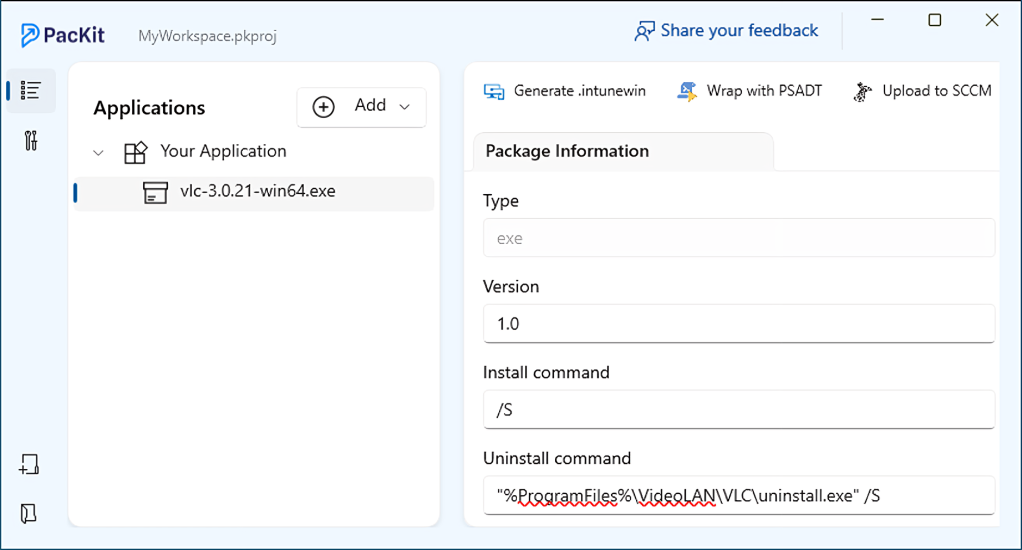How PacKit Simplifies Your Workflow and Reduces Those Repetitive Tasks
For many packagers, the deployment process often involves a series of manual tasks, from writing scripts and configuring deployments to wrapping packages.
If you rely on a detailed README file to track every step, you know how tedious and error-prone this process can be.
But what if there was a way to automate most of these tasks and save yourself valuable time?That’s where PacKit comes in. PacKit is a tool designed to streamline the packaging and deployment process, automating many manual steps that typically slow down your workflow.
Download PacKit for free and access all features instantly – no registration required.
Writing PowerShell Deployment Scripts
Manual Process
Manually writing your PowerShell App Deployment Toolkit (PSADT) scripts can be time-consuming.
You need to ensure that the pre- and post-installation actions are correctly set and that all metadata, such as company name, version, or command lines for silent installation is accurately included.
The PacKit Way
PacKit automates this entire process.
It generates the PSADT script for you by pulling metadata directly from the application package, eliminating the need to manually enter the details.
While you can customize the generated script as needed (by replacing PacKit’s default template), PacKit gives you a strong starting point with minimal effort on your part.
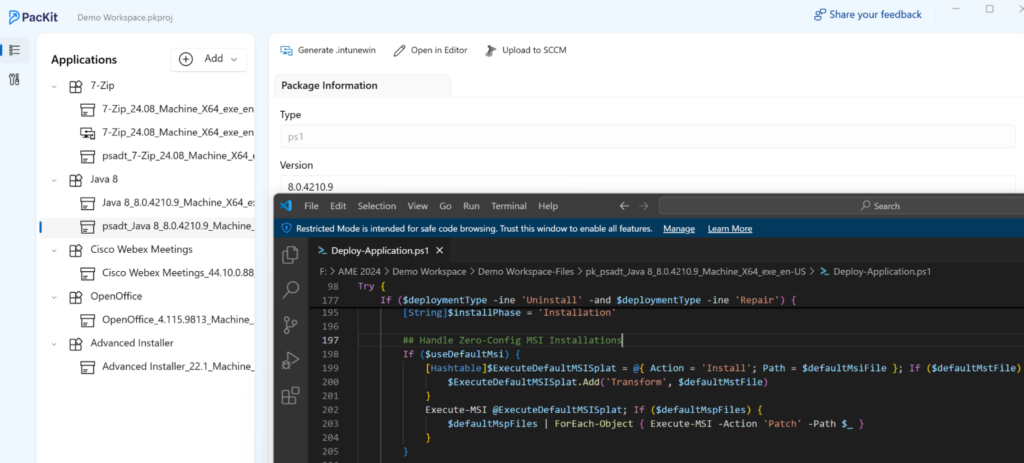
Wrapping Applications for Intune
Manual Process
Wrapping an application for Intune involves multiple steps.
You need to use the IntuneWinAppUtil tool to generate an .intunewin file from the MSI or EXE, configure silent installation command lines, and ensure the package is properly formatted for deployment.
After that, you still have to manually upload the file to the Intune server.
The PacKit Way
PacKit automates these tasks by generating the .intunewin file for you.
Whether it’s an MSI, EXE, or PSADT wrapper, PacKit simplifies the wrapping process and directly uploads the package to the Intune server.
With one click, you can generate the .intunewin file and upload it, with some of the metadata, such as command line arguments, install detection criteria, and appassignment, already pre-configured.
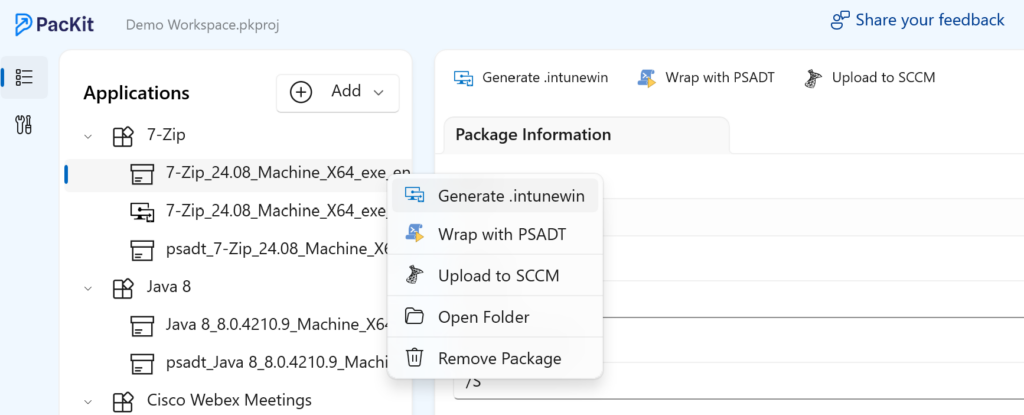
Configuring Deployment Settings
Manual Process
When manually uploading packages to Intune, you would typically configure all the deployment settings such as silent install command lines and detection rules. This process requires careful attention to detail to ensure everything is aligned for a successful deployment.
The PacKit Way
PacKit takes care of this too. Instead of storing all your metadata in multiple documents and then copying it into the Intune portal, you can save it directly in your local PacKit workspace.
This means the package is deployment-ready once uploaded, reducing the number of manual steps along the way.
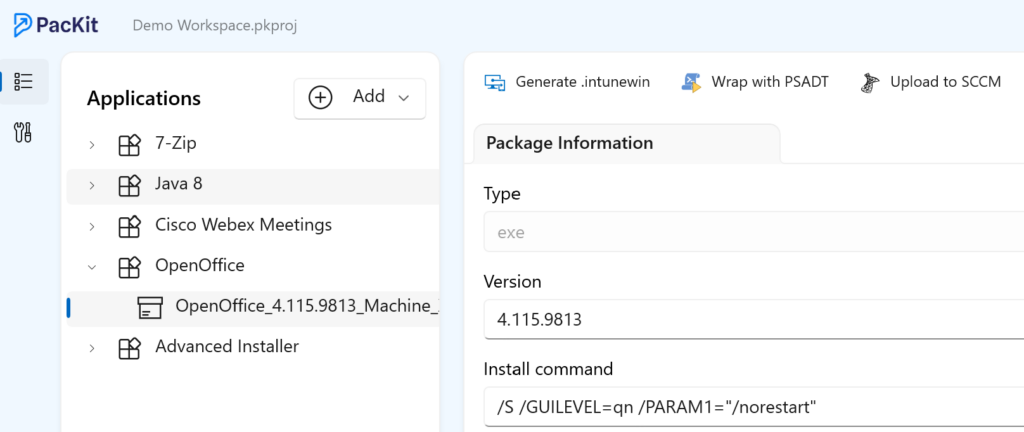
Managing Multiple Projects
Manual Process
Managing multiple deployments simultaneously, and keeping track of each project can become overwhelming. You may have detailed notes or a README file to manage various configurations and scripts, but it’s easy for things to get disorganized.
The PacKit Way
PacKit simplifies this process by offering a project-based workspace, where you can organize your packages by specific projects or applications, keeping everything structured and easy to manage.
You’ll have a complete history of each project, enabling you to easily pick up right where you left off without retracing your steps or searching for information.
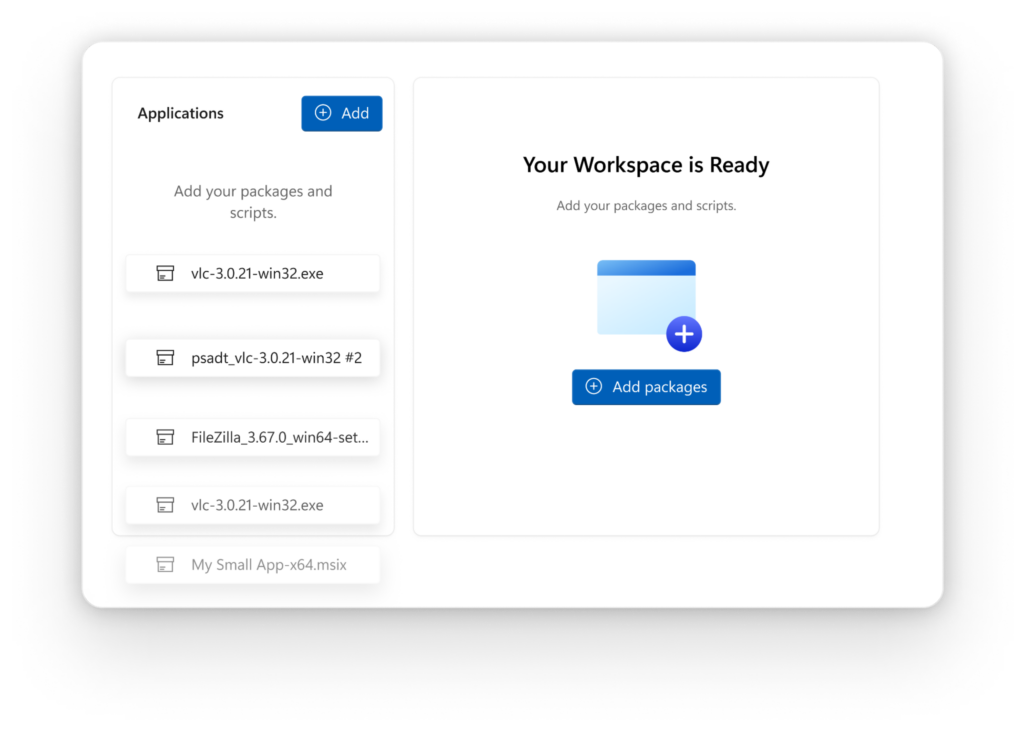
The Value of Automation
At its core, PacKit is about simplifying the deployment process.
By automating essential steps—from script generation to .intunewin file creation and beyond—PacKit eliminates the repetitive tasks packagers typically handle manually. This not only saves time but also reduces the likelihood of errors during deployment, resulting in a more reliable and efficient deployment process.
If you’ve been relying on manual processes and documentation to manage your deployments, it’s time to try something new.
PacKit provides an automated approach that can significantly improve your workflow.
Ready to see the difference PacKit can make? Try it out today, and let us know how it fits into your workflow.


